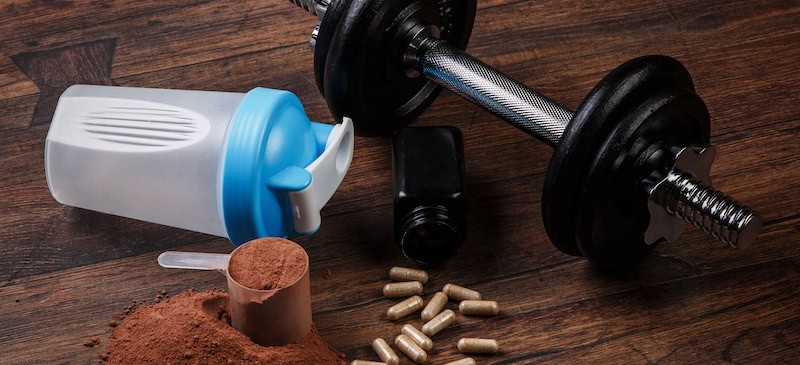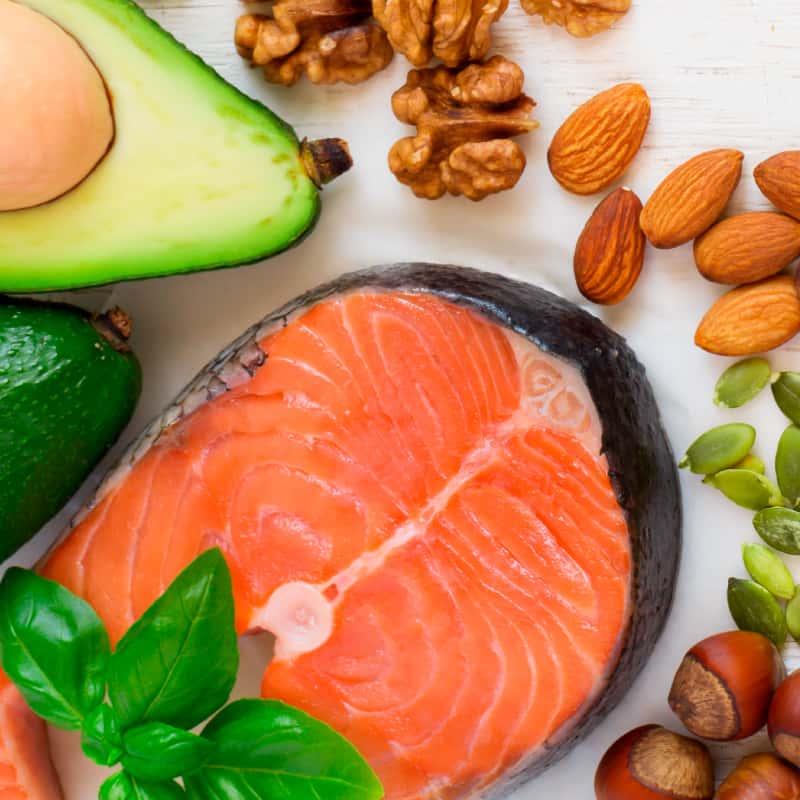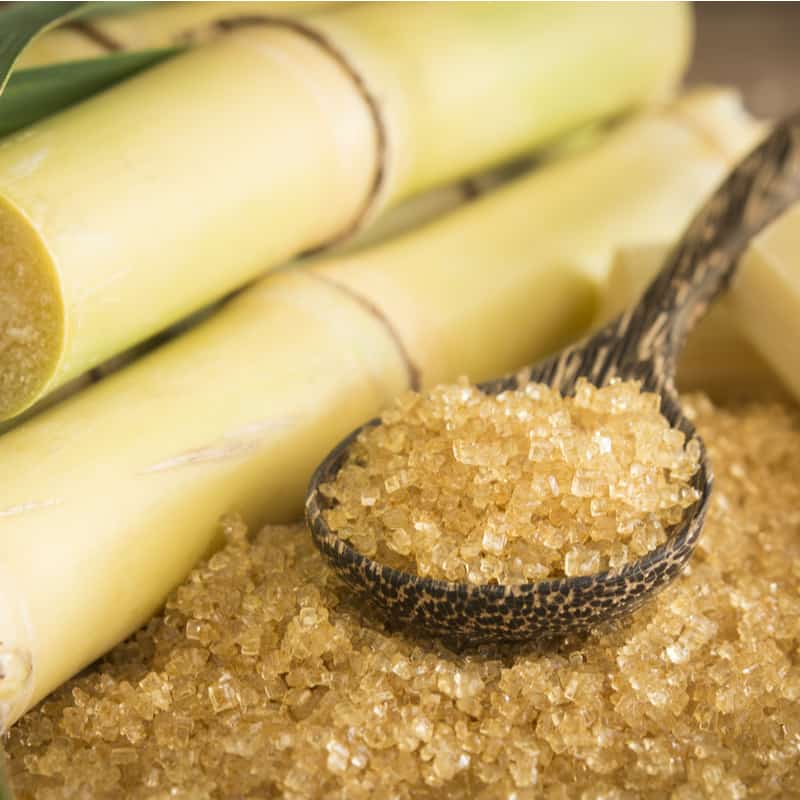This Dr. Axe content is medically reviewed or fact checked to ensure factually accurate information.
With strict editorial sourcing guidelines, we only link to academic research institutions, reputable media sites and, when research is available, medically peer-reviewed studies. Note that the numbers in parentheses (1, 2, etc.) are clickable links to these studies.
The information in our articles is NOT intended to replace a one-on-one relationship with a qualified health care professional and is not intended as medical advice.
This article is based on scientific evidence, written by experts and fact checked by our trained editorial staff. Note that the numbers in parentheses (1, 2, etc.) are clickable links to medically peer-reviewed studies.
Our team includes licensed nutritionists and dietitians, certified health education specialists, as well as certified strength and conditioning specialists, personal trainers and corrective exercise specialists. Our team aims to be not only thorough with its research, but also objective and unbiased.
The information in our articles is NOT intended to replace a one-on-one relationship with a qualified health care professional and is not intended as medical advice.
What Is the Best Time to Take Creatine for Muscle Gain?
October 10, 2025

If you’re serious about building muscle, you’ve likely heard of creatine, a well-researched supplement shown to improve strength, power output and lean mass gains. But one question keeps popping up: When is the best time to take creatine for muscle gain?
Should you take it before a workout? Or after?
Does timing even matter?
In this article, we dive deep in to the science, practical strategies and safety tips so you can maximize your creatine protocol and support your muscle-building goals.
When is the best time to take creatine for muscle gain: before or after a workout?
The short answer is timing may matter a little, but it’s not a magic bullet. What matters most is consistent daily intake and muscle saturation over weeks or months.
A 2021 review titled “Timing of Creatine Supplementation around Exercise: A Real Concern?” suggested that taking creatine immediately before or immediately after resistance training may offer slight advantages over taking it at other times. Some of the proposed mechanisms included:
- Increased blood flow (hyperaemia) to working muscles during/after exercise may help deliver more creatine to muscle tissue.
- Upregulated Na⁺/K⁺ pump activity during and after exercise may facilitate creatine transport into muscle cells.
That said, many studies comparing pre- vs. post-workout creatine show only small differences and often no statistically significant advantage. For example, a study published in the Journal of the International Society of Sports Nutrition found that post-workout creatine monohydrate may be slightly superior for body composition outcomes, but effects were modest.
Another analysis noted that while emerging evidence slightly favors post-workout supplementation, the methodological differences between studies make it hard to draw firm conclusions.
The reason it may be slightly advantageous to take creatine after your workout is your muscles enter a “nutrient-hungry” state. They’re ready to refuel, repair and rebuild.
During this recovery window, muscle cells are especially receptive to nutrients like glucose, amino acids and creatine. Taking creatine along with your post-workout meal, particularly one containing both carbohydrates and protein, may therefore enhance uptake and storage within muscle tissue.
Still, timing should fit your lifestyle and training routine. If it’s easier to add creatine to your pre-workout drink, you’ll still receive its performance and recovery benefits.
The most important factor isn’t the exact minute you take it; it’s that you take it every day so your muscles stay fully saturated.
Research supports this consistency-first approach. A 2022 meta-analysis, for example, found that creatine supplementation combined with resistance training significantly increased muscle mass and strength compared to training alone.
The analysis also noted that timing (before versus after exercise) may slightly influence outcomes, with post-workout use showing a small advantage for lean mass gains.
Similarly, in a controlled eight-week study involving 34 male and female athletes, participants consumed five grams of creatine either within one hour before or after their workouts, along with protein and carbohydrates. Both groups improved in strength and body composition, but differences between timing strategies were minimal … though subtle trends favored the post-workout approach when nutrition and training were optimized.
So when is the best time to take creatine for muscle gain? Taking creatine soon after training may offer a minor edge for muscle recovery and growth, yet the difference is small.
What truly matters for long-term results is daily consistency and maintaining muscle creatine saturation.
Practical takeaways
- If you aim for optimal absorption, within an hour before or after your workout is a smart window.
- Many athletes and coaches lean toward post-workout because it coincides with your recovery window, nutrient uptake and muscle repair.
- At the end of the day, consistency beats perfect timing. Taking creatine regularly and close to your training sessions is more important than agonizing over minute-by-minute timing.
For most people, a well-timed dose either before or after resistance training will get you nearly all of the benefits of taking creatine for women and men alike.
Should I take creatine with food for muscle gain?
Yes. Taking creatine with food, especially alongside sources of carbohydrates and protein, may enhance uptake into muscle.
- Carbs (and protein) stimulate insulin, which helps drive nutrients (including creatine) into muscles. Several studies suggest that co-ingesting creatine with carbs and protein may boost muscle creatine retention.
- That doesn’t mean you need a huge carb load. Simply having a balanced post-workout shake or meal (20-40 grams of carbs plus around 20 grams of protein) when you take creatine is often enough.
However, creatine absorption is still quite good when taken on its own (or in “fasted” conditions), so this is a boost, not a strict requirement.
So pair it with some food when possible, but don’t skip creatine just because you can’t eat immediately.
| Key Focus | What to Do | Why It Matters |
|---|---|---|
| Best Timing | Take within ~60 minutes before or after training | May slightly boost uptake via increased blood flow, but difference is small |
| With Food | Pair with carbs + protein (e.g. shake or meal) | Insulin response supports creatine transport into muscle |
| Rest Days | Take daily regardless of training | Maintains muscle creatine saturation |
| Dose (Maintenance) | ~3-5 g per day | Clinically supported, safe for healthy adults |
| Loading (Optional) | 20 g/day split into 4 × 5 g for 5-7 days | Speeds saturation, but not strictly necessary |
| Split Dosing | If GI upset, use two smaller doses (e.g. 2.5 + 2.5 g) | More gentle on digestion |
| Hydration | Drink extra water (0.5-1 L extra/day) | Creatine draws water into muscles |
| Precautions | Avoid in kidney disease, check with physician, monitor side effects | Safety first |
| What Matters Most | Consistency (daily intake) | Timing gives only a small edge – saturation is the key |
Should I take creatine on rest days for muscle gain?
Absolutely. Rest days are no excuse to skip creatine.
Here’s why:
- Your goal is to maintain muscle creatine saturation in your cells. If you skip days, levels can gradually decline, reducing the benefit.
- Many supplement guides and experts suggest taking creatine daily, regardless of training or non-training days.
- Consistency (daily dosing) is more important than perfect timing on rest days.
- Even on days with no muscle contraction stimulus, muscles are still in a turnover and repair state, so having creatine available may support recovery and adaptation.
Thus, take your creatine on rest days. When is the best time to take creatine for muscle gain on rest days? Ideally at a time that fits your schedule (morning, with a meal, etc.).
Timing is even less crucial when you’re not training.
How to take creatine for muscle gain
1. Choose a high-quality creatine
- The gold standard is creatine monohydrate (micronized).
- Look for third-party testing.
- Avoid blends with unnecessary stimulants, fillers or huge proprietary “complexes.”
2. Decide loading vs. maintenance
- Loading phase (optional): Take about 20-25 grams per day in four- to five-grams doses for five to seven days. This saturates muscles faster.
- Maintenance phase: Take roughly three to five grams per day once muscle stores are saturated.
- You can skip loading and take three to five grams daily. You’ll saturate slower (about 28 days) but avoid short-term “water weight” spikes.
3. Time around workouts
- Take creatine within 60 minutes of your workout (either before or after).
- Pair it with carbs and protein when possible to support uptake.
- On rest days, take it with your usual meal. Consistency is key.
4. Hydration and splitting
- Drink enough water since creatine draws water into muscles.
- If five grains in one shot causes gastrointestinal upset, split into two doses, such as 2.5 grams twice a day.
5. Cycle or not?
- Long-term use in healthy individuals appears quite safe. Cycling off is optional.
- If you prefer a break, many athletes do eight to 12 weeks on, followed by weeks off, but evidence doesn’t strongly demand cycling.
6. Track progress
- Monitor gains in strength, lean mass and performance.
- Adjust if necessary. For instance, larger individuals might use doses at the higher end of the maintenance range.
How much creatine to take per day for muscle gain
Here’s a breakdown of dosing commonly used in research and practice:
| Phase | Daily Dose | Duration | Notes |
|---|---|---|---|
| Loading (optional) | ~20 g/day (4 × 5 g) | 5-7 days | Accelerates muscle saturation |
| Maintenance | 3-5 g/day | Ongoing | Enough to keep muscles saturated |
| Minimal effective | ~2-3 g/day | Longer term | Slower saturation but still effective |
A rule of thumb, five grams per day is safe and effective for most adults looking to gain muscle. Some research also uses 0.03 g per kg bodyweight, but most protocols gravitate toward about three to five grams as a simple standard.
Larger individuals or very muscular athletes may benefit from slightly higher intakes within safe ranges.
Risks and side effects
Although creatine is among the most studied supplements, it’s wise to know potential downsides and how to mitigate them.
Common side effects
- Water retention/weight gain. The first few days/weeks, you may see weight gain due to water being drawn into muscle cells.
- GI discomfort (cramping, diarrhea), especially if taking a large dose at once. Splitting the dose helps.
- Kidney concerns in predisposed individuals. While creatine is generally safe in healthy individuals, anyone with kidney disease or impaired renal function should consult a doctor before use.
- Potential dehydration or cramping, though many modern reviews dispute a strong link.
Safety and precautions
- Stick to clinically tested doses (3-5 g/day maintenance).
- Maintain good hydration.
- Avoid if you have kidney or liver disease unless cleared by a medical professional.
- If you take medications (especially nephrotoxic ones), talk to your doctor.
- If pregnant or breastfeeding, consult a healthcare provider, as data is limited.
- Take breaks or monitor long-term usage if that makes you more comfortable, though evidence supports many years of safe use in healthy adults.
Frequently asked questions
Does timing really matter, or is consistency more important?
Consistency is more important. While timing can provide a slight edge, what truly drives results is keeping muscle creatine stores saturated over time via daily use.
Should I take creatine before cardio or a non-strength training session?
The primary benefits of creatine relate to high-intensity, short-duration efforts (resistance training, sprints). If you do cardio, taking creatine before or after isn’t harmful. Just aim to keep your dosing consistent.
Can I take more than five grams per day to speed gains?
Doses above five grams don’t generally produce proportional benefits once muscle stores are saturated. Excess may be excreted or increase GI discomfort. Stick to evidence-based doses.
Do I need to cycle off creatine?
There is no strong requirement to cycle off for healthy adults. Some people prefer periodic breaks, but it’s not mandated by existing research.
Will creatine cause kidney damage?
In healthy individuals, studies show creatine is safe at standard dosages. However, if you have kidney disease or risk factors, get medical clearance.
How long until I see results?
If you load, you might see strength gains in one to two weeks. If you use maintenance dosage, expect visible gains in about three to four weeks.
Conclusion
If you’re aiming to maximize muscle gain with creatine, here’s the bottom line:
- The best time to take creatine for muscle gain is within about one hour before or after your workout, but the difference is small. Consistency is king.
- Taking creatine with a meal (especially one containing carbs and protein) can boost absorption.
- Don’t skip rest days. Take creatine daily to maintain saturation.
- Use a reasonable dose (three to five grams per day maintenance or optional loading first), choose a high-quality monohydrate version, stay well-hydrated and monitor for side effects.
- For most healthy adults, creatine is safe and effective, but always check with your doctor if you have kidney, liver or other health issues.
Follow these principles, pair creatine with smart nutrition (including other muscle-building foods) and resistance training, and you’ll support your body’s ability to build lean muscle more effectively.










